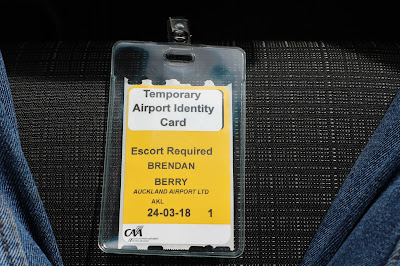On the 27th March 1977, 41 years ago today, two Boeing 747 passenger jets, KLM Flight 4805 and Pan Am Flight 1736, collided on the runway at Los Rodeos Airport on the Spanish island of Tenerife, killing 583 people, and making it the deadliest accident in aviation history.
At 12:30pm a bomb explodes in the Las Palmas passenger terminal. Because of warnings of a possible second bomb, the airport was closed. A large number of flights were diverted to Tenerife. Like KLM Flight 4805 from Amsterdam and PanAm Flight 1736 from Los Angeles and New York.
Las Palmas Airport re-opened to traffic again at 15:00.
Because the PanAm passengers remained on aboard it was possible to leave Tenerife at once. The taxiways were congested by other aircraft however. This meant the PanAm crew had to backtrack on runway 12 for take-off on runway 30. The entrance to runway 12 however, was blocked by the KLM Boeing. The PanAm flight had to wait for almost 2 hours before all KLM passengers had reboarded and refuelling had taken place.
The KLM flight was then cleared to backtrack runway 12 and make a 180deg. turn at the end. Three minutes later (at 17:02) Pan Am 1736 was cleared to follow the KLM aircraft and backtrack runway 12. The PanAm crew were told to leave the runway at the third taxiway and report leaving the runway. At 17:05:44 KLM 4805 reported ready for take-off and was given instructions for a Papa beacon departure. The KLM crew repeated the instructions and added "We are now at take-off". The brakes were released and KLM 4805 started the take-off roll.
Tenerife tower, knowing that Pan Am 1736 was still taxiing down the runway replied "OK ...... Stand by for take-off, I will call you." This message coincided with the PanAm crew's transmission "No ... uh we're still taxiing down the runway, the Clipper 1736". These communications caused a shrill noise in the KLM cockpit, lasting approx. 3.74 seconds.
Tenerife tower replied: "Papa Alpha 1736 report runway clear.", whereupon the PanAm crew replied: "OK, will report when we're clear". This caused some concerns with the KLM flight engineer asking the captain: "Is he not clear then?" After repeating his question the captain answers emphatically: "Oh, yes".
A number of second before impact the KLM crew saw the PanAm Boeing still taxiing down the runway. The crew tried to climb away and became airborne after a 65 feet tail drag in an excessive rotation.
The PanAm crew immediately turned the aircraft to the left and applied full power. The KLM aircraft was airborne, but the fuselage skidded over the PanAm's aft fuselage, destroying it and shearing off the tail. The KLM aircraft flew on and crashed out of control 150 m further on, sliding another 300 m bursting into flames.
PROBABLE CAUSE:
"The KLM aircraft had taken off without take-off clearance, in the absolute conviction that this clearance had been obtained, which was the result of a misunderstanding between the tower and the KLM aircraft.
This misunderstanding had arisen from the mutual use of usual terminology which, however, gave rise to misinterpretation. In combination with a number of other coinciding circumstances, the premature take-off of the KLM aircraft resulted in a collision with the Pan Am aircraft, because the latter was still on the runway since it had missed the correct intersection."
KLM Flight 4805 was a charter flight for Holland International Travel Group and had arrived from Amsterdam Airport Schiphol, Netherlands. Its captain was Jacob Veldhuyzen van Zanten, age 50.
At the time of the accident, Veldhuyzen van Zanten was KLM's chief flight instructor, with 11,700 flight hours, of which 1,545 hours were on the 747. The first officer was Klaas Meurs, age 42. At the time of the accident, Meurs had 9,200 flight hours, of which 95 hours were on the 747. Flight engineer was Willem Schreuder, age 48. At the time of the accident, Schreuder had 15,210 flight hours, of which 540 hours were on the 747. The aircraft was a Boeing 747-206B, registration PH-BUF, named
Rijn (Rhine). The KLM jet was carrying 14 crew members and 235 passengers, including 52 children. Most of the KLM passengers were Dutch, while also on board were 4 Germans, 2 Austrians and 2 Americans. After the aircraft landed at Tenerife, the passengers were transported to the airport terminal. One of the inbound passengers, who lived on the island with her partner, chose not to re-board the 747, leaving 234 passengers on board.
Pan Am Flight 1736 had originated at Los Angeles International Airport, with an intermediate stop at New York's John F. Kennedy International Airport (JFK). The aircraft was a Boeing 747-121, registration N736PA, named
Clipper Victor. Of the 380 passengers (mostly of retirement age, but including two children), 14 had boarded in New York, where the crew was also changed. The new crew consisted of captain Victor Grubbs, age 56, first officer Robert Bragg, age 39, flight engineer George Warns, age 46, and 13 flight attendants.
At the time of the accident, captain Grubbs had 21,043 hours of flight time, of which 564 hours were on the 747. First officer Bragg had 10,800 flight hours, of which 2,796 hours were on the 747. Flight engineer Warns had 15,210 flight hours, of which 559 hours were on the 747.
Aircraft 1 Information
Aircraft: Boeing 747-206B
Operator: KLM
Flight Number: 4085
Registration: PH-BUF
Serial Number: 20400
First Flew: 14/9/1971
Age: 6 yrs
Aircraft 2 Information
Aircraft: Boeing 747-121
Operator: Pan Am
Flight Number: 1736
Registration: N736PA
Serial Number: 19643
First Flew: 24/12/1969
Age: 8 yrs













































































